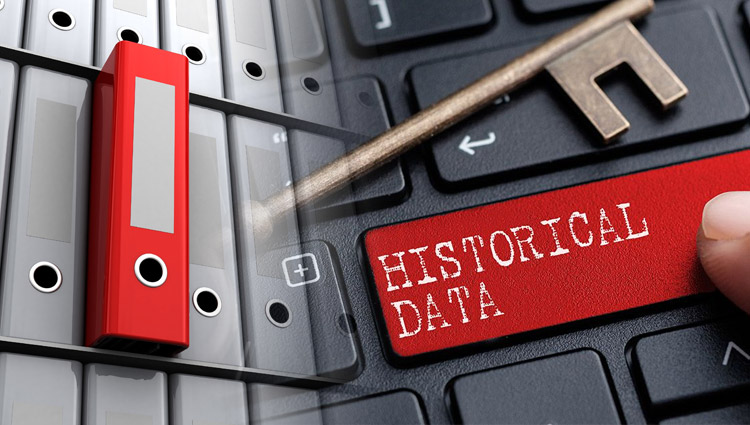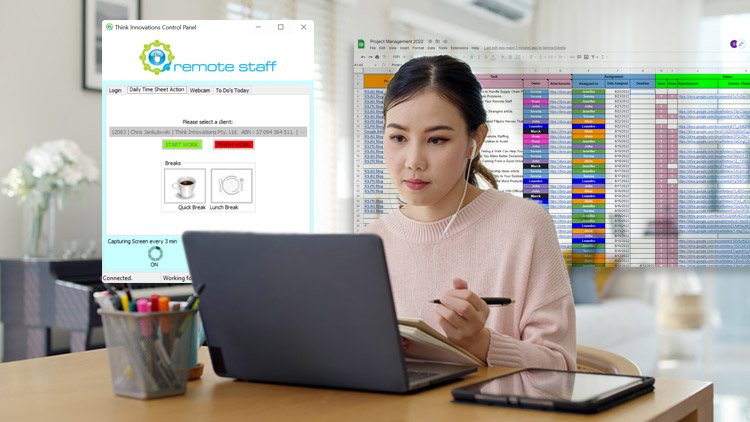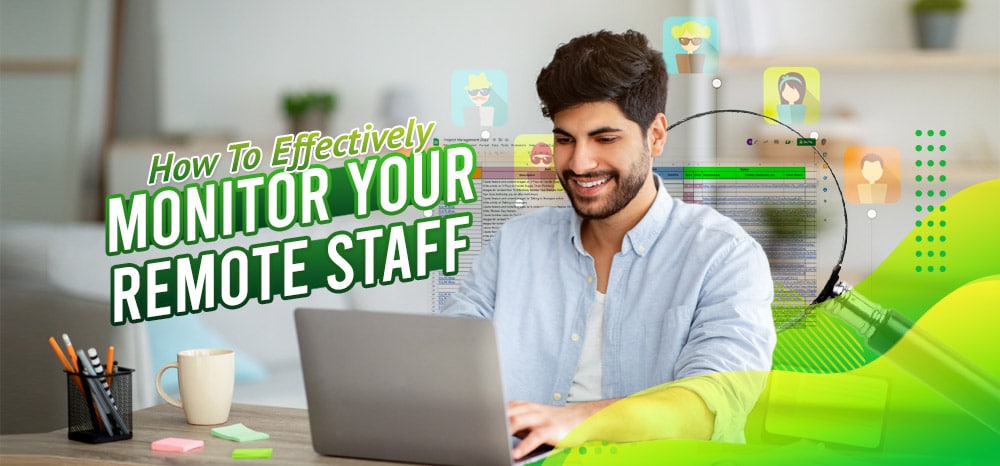Tracking the performance of your remote staff from the Philippines is important, but you must tread carefully to get the best results.
Whenever the topic of monitoring employees in the workplace is discussed, prudence is often advised. On the one hand, you want to trust your staff and allow them to develop their own working style. However, on the other hand, you want to ensure business standards are upheld and productivity maintained. It’s a tricky balancing act to get right.
When you’ve invested time, effort, and money into what you hope is the right candidate, it’s only natural that you want to ensure they’re contribution to your business.
To Monitor or Not to Monitor?

It’s an oft-debated subject whether tracking employees at work is ethical. Nevertheless, if your remote staff aren’t doing the job in a timely, efficient, and productive manner, then they’re costing your business money. They are also putting its reputation on the line.
However, if you raise the topic of workplace monitoring with your Filipino remote staff, it’s likely you’ll be met with resistance. Filipino workers are often concerned about the breach of their privacy and your seeming lack of trust in them.
Employee monitoring should never be conducted in a way that belittles your remote staff’s abilities. In fact, workplace monitoring should be seen as a safeguarding practice for the business and valuable employees.
Here are a few tips to guarantee employee monitoring success for your business:
1. Answer your “why.”

First and foremost, ask yourself why you want to monitor your remote staff? If you’re unable to answer why that piece of data matters to you, then it’s going to be a waste of your time and effort. There’s not point in managing such data.
Leaving the “why” unanswered will also complicate matters when you discuss with employees the expected benefits from the monitoring process. If you want their cooperation, then getting them to understand just why you want to monitor them is essential.
2. Perfect your PR.

As with any new strategy or process you implement in your organisation, you need to promote it in the right way to get buy-in from your remote workers. Look at the tasks or behavior points you’re going to measure employees on. Promote how these tasks or points benefit them. If you will be tracking your remote staff’s start and finish times with automated software, discuss how this removes the need for a manual timesheet. Mention that there will be fewer concerns regarding inputting payroll details on time with automated software. Any type of monitoring you introduce is likely to be data-driven, so reinforce the message how the data will be used to improve the day-to-day practices.
3. Study your history.

You may not even realise that your past or current efforts already allow you to gather and analyse data on your remote staff. CRM systems to follow client communications and task management solutions are just two pieces of software you probably already possess which can be utilised to track remote staff. These kinds of technologies enable you to see which tasks remote workers are working on. Moreover, they enable you to have greater insight into how they manage their day-to-day duties.
4. Establish your metrics.

Every Filipino remote staff has his/her own way of working. What may work for one person won’t necessarily work for another. Consider which metrics matter in your workplace. Are you more focused on the time spent on a project? Or are you all about the content as long as the work gets done regardless of time or effort? Results are one of the most important indicators of employee productivity, so choose which results matter most to you and your business.
5. Trust your people.

Above all, trust that your remote staff can get the job done on time and within company standards. If you’ve hired and trained your employees well, then you’re unlikely to run into issues later down the line. Your role as an employer is to empower your remote staff to do the best job possible. You should be championing their successes and providing guidance and advice when they need them. Monitoring tools should be seen as something which ultimately helps employees complete their tasks, not as a way to keep track of their activities.
6. Manage your team well.

Managing your remote staff well requires a combination of trust and confidence. Here at Remote Staff, we have a custom-built a remote working platform that fosters trust and confidence through full transparency, providing our clients a real-time dashboard of everything going on with their virtual team: 3-minute screenshots and app usage reports, plus project management and communication tools.
Want to learn more about a better approach to monitoring your remote staff? Let us know in the comments section or get in touch with us by scheduling a callback or giving us a call.























 Zero Recruitment Fee
Zero Recruitment Fee